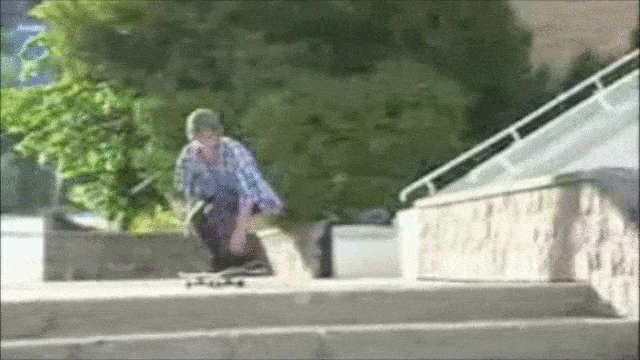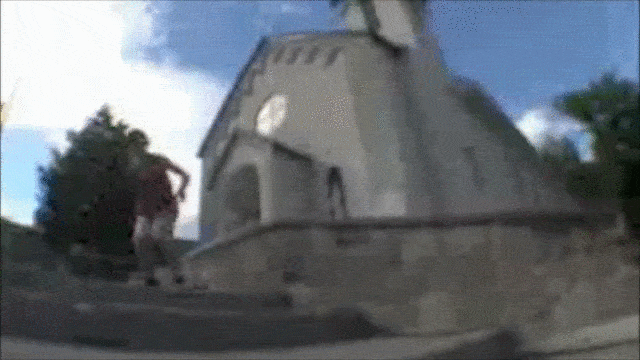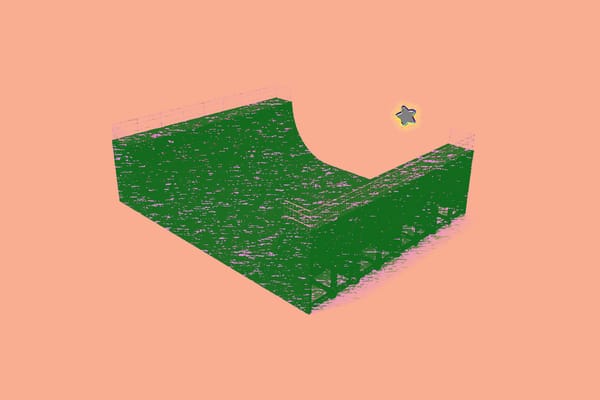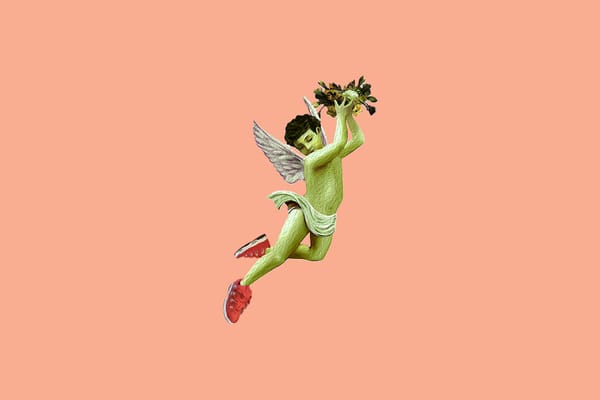An Emotional History of St. Anthony's Hubba
Or learning to let yourself be vulnerable at the spot.
It became clear that I had reached an impasse. The summer heat pressed into 16-year-old me with a brutishness that left me sticky, dehydrated, and my skin-tight jeans unable to give me the range of motion necessary to ollie up into a backside lipslide on the infamous hubba ledge outside of St. Anthony’s Catholic Church in Trail, BC.
This was a familiar struggle. I’d found myself at this obstacle many times before. Constricted by the wrong thing I thought I was doing right. Where I believed I had the ability to execute, but for whatever reason, it wouldn’t compute. The data input not matching the output, leaving me incompatible with the world around me. A frustrating state of stasis.
In times past when meeting this wall, I’d elected to run headlong into it in ungraceful, Gronk-like ways. Choosing not to step back and see if I could walk around it or if there was a door I could simply knock on to get through. The year previous, with a notice of a school suspension still sticking out of my back pocket, I spent hours trying to nollie noseslide the ledge. Eventually, due to sheer will and ignorance, I rode away as if a phantom had been in control. My legs numb, lips pasty white, and my friends all fed up from having to wait on me and my stubbornness.

Afterwards, I was bedridden with sunstroke, suspended from school, and the clip would never end up being used in anything until debuting in GIF form above sixteen-years later. Had I learned anything from this? Maybe acknowledged the suffering I’d put my friends and myself through? Did I ever show the note to my father? At the very least, had I realized it wasn’t a great idea to wear a toque in +25 degree celsius weather?
Later that summer, I’d return in an unsuccessful attempt to bluntslide St. Anthony’s hubba. Toque on, pants so tight you could see the detail of my kneecaps, I was ready to spend hours slamming my person into the hot asphalt. My legs barely able to move in the stiff second-hand Levis, I’d clip on the way up to the ledge, slip out on the way off of it, throwing myself like a penny into a wishing well on every attempt, only ever getting the thud of impact as a response.
That had been a difficult year. Following the death of my stepfather and my mother subsequently suffering a mental health crisis that required hospitalization, my skateboard and I became a singular entity. It was a distraction and absolution from the weight I couldn’t carry. Skateboarding magazines and videos became the holy text I’d turn to for comfort. Ryan Gallant’s video part in Transworld Skateboarding’s First Love, set to the song “O-o-h Child” by the Five Stairsteps, became a hymn. I’d put it on repeat just to hear that things are gonna get easier, that things’ll get brighter.
Introspection is difficult in times of great personal upheaval, like trying to fit a key into the lock of your front door after one too many drinks. If there was a chance to work through this anguish, to do the trick, I would first have to make myself vulnerable in order to acknowledge and learn from what was ailing me. Looking up, I tried to make out the image in the circle of stained glass above the church doors, sunlight obscuring the figure blown into its surface.
There, in front of god and St. Anthony’s, I pulled off my pants. Exposing the pale flesh of my thighs to an unforgiving sun and gritty parking lot. A cool breeze teased at the hem of my boxer briefs. A couple of painless tries later, I was riding away.

If I’d had the foresight, I would’ve taken this lesson and let it guide me into whatever future I might stumble into. Unfortunately, flashing cheek at the local house of worship didn’t translate into the talismanic metaphor I needed it to at the time. It wouldn’t be until adulthood, when the precipitous deterioration of my own mental health, fortunately, coincided with finally being able to afford therapy, that I finally learned how to allow myself to be vulnerable. To let others see me in that place, root around in it, and attempt to sort through the mess.
It’s still a struggle, but progress has been made, however shaky it seems at times. This fluid state keeps me vigilant as the world changes along underneath it. St. Anthony’s is no longer a church, having been converted into an “office and living space” a few years back. But the ledge is still there. I sized it up last spring, the thing still as slippery as ever.





